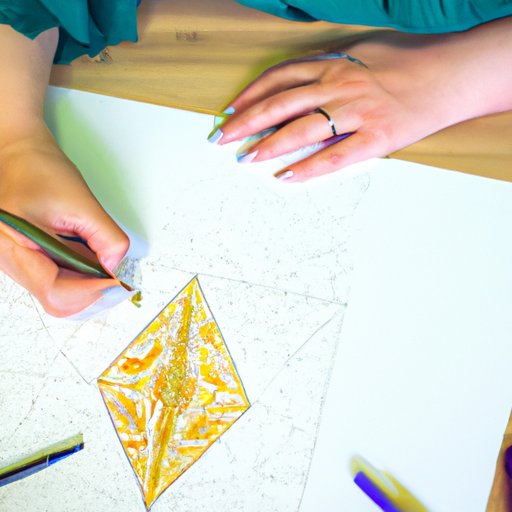
Introduction
If you’re interested in drawing, you’ve come to the right place! Whether you’re a beginner or an experienced artist, this article will provide you with a step-by-step guide to drawing various objects and offer techniques and tips to improve your drawing skills. We’ll also explore different drawing styles and provide a tutorial for you to follow along with. Lastly, we’ll discuss the benefits of drawing for your mental health and offer some drawing exercises to get you started.
Step-by-Step Guide to Drawing Different Objects
Start with Simple Shapes
Before you start drawing anything too complex, it’s important to master drawing basic shapes. Start by drawing circles, squares, and rectangles. Then, use these shapes to create simple objects such as a ball or a cube. This will help you understand the form and perspective of objects and provide a foundation for more complex drawings.
Moving On to More Complex Objects
Once you’ve mastered basic shapes, it’s time to move on to more complex objects. Start with something easy such as a tree or a house, and work your way up to more challenging objects such as faces or animals. Remember to take it one step at a time, and don’t be afraid to erase and start again if necessary.
Techniques and Tips to Improve Drawing Skills
Advice on Pencils
When it comes to drawing, the type of pencil you use can make a big difference. There are many different types of pencils, each with their own uses. For example, a 2H pencil is great for light sketching, while a 2B pencil is better for shading. Experiment with different types of pencils to find the ones that work best for your drawing style.
Shading and Creating Textures
Shading is an important part of drawing that can add depth and dimension to your artwork. One way to create shading is to use different strokes with your pencil, such as hatching or cross-hatching. Think about the direction of the light source and how it would affect the object you’re drawing. Creating textures can also add interest to your drawing. Experiment with using different tools such as a blending stump or kneaded eraser to create different effects.
Practice Makes Perfect
Like any skill, drawing takes practice. The more you draw, the better you’ll get. Set aside time each day for drawing and try different exercises to challenge yourself. Don’t be discouraged if your drawings don’t turn out the way you want them to at first – keep practicing and you will improve over time.
Comparison of Different Drawing Styles
Introduction to Different Artists
Learning about different artists and their styles can help you develop your own drawing skills. Artists such as Da Vinci, Picasso, and Warhol each had their own unique style and approach to drawing. Researching their work and understanding their techniques can provide inspiration for your own drawings.
Explanation of Different Approaches
One way to improve your drawing skills is to experiment with different approaches. Try drawing with your non-dominant hand, or drawing without looking at the paper. These exercises can help you break out of your comfort zone and develop your creativity.
Draw Along Tutorial
Description of the Tutorial
One of the best ways to improve your drawing skills is to follow along with a tutorial. In this tutorial, we’ll provide step-by-step instructions for drawing a landscape scene. You can follow along with the instructions, or pause the video and draw at your own pace.
Benefits of Following Along
Following along with a tutorial can help you learn new techniques, improve your confidence, and provide a sense of accomplishment when you’ve completed the drawing. It’s also a great way to connect with other artists and share your work.
Art Therapy
Explanation of the Benefits of Drawing for Mental Health
Drawing can be a therapeutic activity that provides stress relief and improves mood. Art therapy is a form of therapy that uses creative activities such as drawing to improve mental health. Drawing can help express emotions and provide a sense of control over difficult situations.
Drawing Exercises and Prompts
Try drawing your emotions – use color and texture to represent how you’re feeling. Or, draw a comforting place – a place where you feel safe and secure. These exercises can provide a sense of relaxation and help to reduce stress.
Conclusion
Recap of the Topics Covered in the Article
In this article, we’ve covered the basics of drawing, provided a step-by-step guide for drawing different objects, offered techniques and tips to improve your drawing skills, explored different drawing styles, provided a tutorial for you to follow along with, and discussed the benefits of drawing for your mental health.
Encouragement to Start Drawing
Whether you’re a beginner or an experienced artist, drawing is a fun and rewarding activity. Start with basic shapes and work your way up to more complex objects. Don’t be afraid to experiment and try different approaches.





